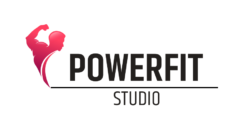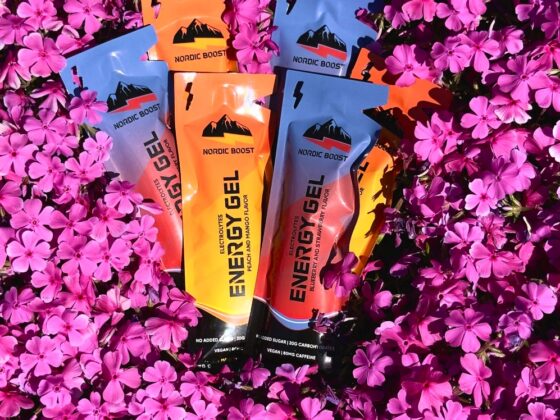A lot of people walk into a fitness studio full of motivation. They book classes, sweat hard, and feel great in the moment—but a few months later, they’re not sure what has really changed. Strength gains are fuzzy, body composition is unclear, and the plan for the next phase is basically “keep doing classes and hope for the best.”
Studios that offer intense, varied training—strength circuits, conditioning, functional training, or even more specialized formats—give you powerful tools. The missing piece is a structure that connects all those sessions into a clear, long-term plan.
Why Studio Training Needs a Bigger Picture
In a studio environment, it’s easy to get a great workout and still lack direction. Without a bigger picture, you might:
- Repeat your favorite classes without progressing load or difficulty
- Train hard but neglect mobility, recovery, or weaker movement patterns
- Lose track of how your performance and body are actually changing over time
Strength and conditioning research is very consistent on one point: progressive overload—gradually increasing difficulty over time—is what drives serious improvements in strength, power, and endurance. If every week looks random, your body adapts more slowly and you can’t tell what’s working.
That’s why serious athletes work from written programs. They know which phases they’re in, which days are heavy or light, and how today’s session connects to what they’ll do next month. Recreational studio clients can borrow this same logic in a simpler form.
Designing a “Block” Approach for Studio Clients
One very effective way to organize your training around studio classes is the block method:
- Block 1: Foundation (4–6 weeks)
- Focus on mastering basic movements, learning correct technique, and building joint stability and core strength. The goal isn’t to set records; it’s to build a base.
- Block 2: Progression (4–8 weeks)
- Gradually increase loads, reps, or intensity during classes. You might move from lighter kettlebells to heavier ones, hold harder positions, or take fewer rest breaks.
- Block 3: Performance or Aesthetic Focus (4–8 weeks)
- Now you prioritize a specific outcome: more strength in key lifts, improved conditioning for a sport, or visible changes in muscle tone and body composition.
Within each block, your studio classes are no longer “random.” A Monday strength class, a mid-week conditioning session, and a weekend total-body workout each have a clear role in your plan.
You can keep these blocks as simple PDFs—one for each phase—containing your target classes, progression notes, and key metrics to track.
Tracking Strength and Conditioning Without Becoming Obsessed
You don’t need a lab to know if your training is working. For studio clients, a practical tracking system might include:
- Baseline movements: squat pattern, hinge pattern, push, pull, plank/anti-rotation
- Simple benchmarks: how many quality push-ups, how long you can hold a plank, what kettlebell weight you use for goblet squats, how many rounds you complete in a typical circuit
- Cardio markers: perceived effort on a common finisher, time to complete a standard interval set, or heart rate recovery after hard efforts
Every few weeks, you repeat the same benchmarks. If your numbers improve and you feel better in and out of class, your program is working. If progress stalls, you and your coach or trainer can adjust volume, load, or recovery.
Often, studios share these benchmarks, warm-ups, and accessory drills as digital handouts or program PDFs. When those documents are scattered between emails and chats, people forget to use them—so organizing them matters.
Organizing Your Studio Programs with Simple PDF Tools
Many clients end up with separate PDFs for:
- Studio class descriptions and schedules
- Individual 4–6 week training blocks
- Warm-up routines, mobility flows, and recovery drills
- At-home “backup workouts” for days they can’t make it to the studio
Instead of juggling a dozen files, it’s much easier to maintain a few powerful, structured documents:
- A “Master Training Plan” for the next 12–16 weeks
- A “Movement Prep & Recovery” pack
- Optional “At-Home Workouts” collection
With a PDF tool like pdfmigo.com, you can quickly merge PDF class guides, block outlines, and benchmark sheets into one clean file for each of those categories. That way, when you walk into the studio, everything you need—your current block, target loads, and key cues—is in a single document on your phone.
When Your Goals Change, Your Documents Should Change Too
Studio clients rarely have just one fixed goal forever. You might start with general fat loss, decide you want to get stronger in specific lifts, then later shift toward performance for a race, a competition, or simply feeling more athletic.
When your focus changes, your training documents should evolve as well. That’s where it helps to rearrange your digital plans instead of rewriting everything from scratch:
- Pull out only the sections relevant to your next phase
- Separate strength-focused blocks from conditioning-heavy blocks
- Create a dedicated file for mobility and recovery if that becomes a priority
If your original plan PDF is large and includes several phases, you can split PDF files into new, goal-specific documents—for example, a dedicated “Power & Strength Block” file you revisit whenever you want to emphasize lifting heavier, or a separate “Conditioning & Work Capacity” file you use before a busy sports season or active holiday.
This modular approach makes your training flexible while keeping everything organized.
Example: A Well-Structured Week in a Studio Setting
Here’s how a studio-based client might put all this together during a 6-week progression block:
- Monday – Strength & Skills
- Focus on major compound movements in class: squats, hinges, presses, rows, and core stability. You note loads used and reps completed in your program PDF.
- Wednesday – Conditioning & Athleticism
- Intervals, circuits, or functional conditioning sessions that challenge your heart and lungs while incorporating agility, carries, and explosive moves—still recorded on your sheet so you can see improvements.
- Friday – Mixed Total-Body Session
- A blend of strength and conditioning, with slightly lower intensity but higher variety. This is where you test new variations once your foundation feels solid.
- Weekend – Mobility & Recovery
- A lighter day with mobility flows, stretching, or low-intensity cardio, guided by a separate “Recovery & Mobility” PDF.
All four days are connected in your written plan, so when you look back over 6 weeks, you see clear changes: higher working weights, better conditioning benchmarks, and more confidence in complex movements.
From “Random Hard Workouts” to Smart, Studio-Based Training
Studios are powerful environments: music, coaching, community, and equipment all drive you to train harder than you would alone. To turn that effort into lasting results, you need structure—clear phases, trackable benchmarks, and organized programming you can actually follow.
By treating your sessions as part of a long-term plan, documenting your progress, and keeping your training PDFs tidy and easy to access, you transform studio time into a focused progression rather than a string of disconnected workouts.









